The Tethered Aerostat Radar System (TARS) is an American low-level airborne ground surveillance system that uses aerostats (moored balloons) as radar platforms.
Poland is hoping to spend $1.2 billion.
The U.S. Defense Security Cooperation Agency published the following notice regarding the potential sale.
“The State Department has made a determination approving a possible Foreign Military Sale to the Government of Poland of Airspace and Surface Radar Reconnaissance aerostat systems and related elements of logistics and program support for an estimated cost of $1.2 billion. The Defense Security Cooperation Agency delivered the required certification notifying Congress of this possible sale today.
The Government of Poland has requested to buy Airspace and Surface Radar Reconnaissance (ASRR) aerostat systems; Airborne Early Warning (AEW) Radars with Identification of Friend or Foe (IFF) capability; electronic sensor systems; mooring systems with powered tether with embedded fiber optics; Ground Control Systems (GCS); associated installation hardware; special tools and test equipment; Basic Issue Items (BII); program management support; verification testing; systems technical support; transportation; spare and repair parts; communications equipment; operators and maintenance manuals; personnel training and training equipment; tool and test equipment; repair and return; publications and technical documentation; Quality Assurance Team (QAT); U.S. Government and contractor engineering, technical, and logistics support services; in-country Field Service Representatives (FSR); and other related elements of logistics and program support. The estimated total program cost is $1.2 billion.
The proposed sale will support the foreign policy goals and national security objectives of the United States by improving the security of a NATO Ally that is a force for political stability and economic progress in Europe.
The proposed sale will improve Poland’s capability to meet current and future threats of enemy air and ground weapons systems. Poland will use the capability as an airborne early warning system to defend against incoming regional threats. This will also enable Poland to increase its contribution to future NATO operations. Poland will have no difficulty absorbing this equipment into its armed forces.
The principal contractors will be Raytheon Intelligence and Space, of El Segundo, CA; TCOM, L.P., of Columbia, MD; ELTA North America, of Annapolis Junction, MD; and Avantus Federal LLC (a wholly owned subsidiary of QinetiQ, Inc.), of McLean, VA. There are no known offset agreements proposed in connection with this potential sale.
Implementation of this proposed sale will require contractor representatives to travel to Poland to conduct the Contractor Logistics Support, training, and component assembly support. There will be no adverse impact on U.S. defense readiness as a result of this proposed sale.”


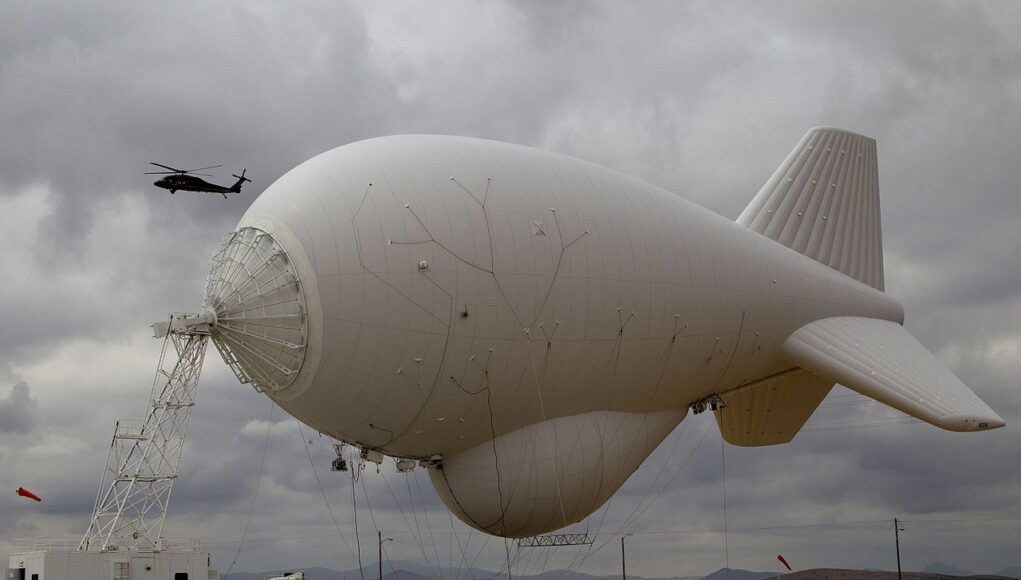
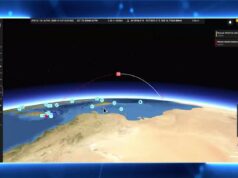
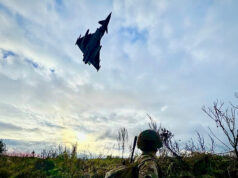
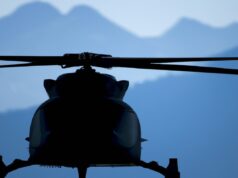
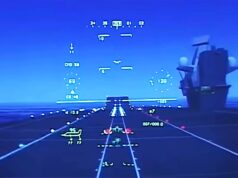
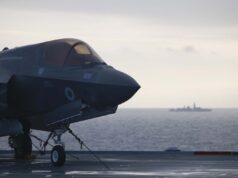

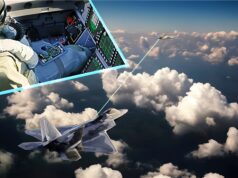
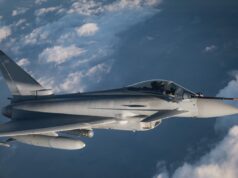
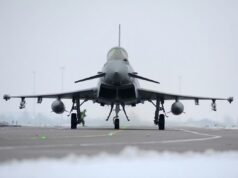
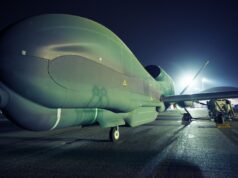

Pointless waiting for the balloon to go up only to find you’ve been caught with your pants down.
I tend to get the impression that Poland is showing the rest of Europe the way forward.
Keel for first Polish Swordfish frigate laid05 February 2024
“A keel-laying ceremony for Poland’s first Project 106 Miecznik (Swordfish)-class frigate was held at the Polish Armaments Group (Polska Grupa Zbrojeniowa: PGZ) Naval Shipyard in Gdynia on 31 January, PGZ has confirmed.
The future ORP Wicher (274) is the first of three multi-purpose frigates in the class being built by PGZ Naval Shipyard in co-operation with strategic partners Babcock (as the platform design provider and technology partner), Remontowa Shipbuilding, MBDA, and Thales.
Under current planning, Wicher is expected to be launched in the third quarter of 2026 and commissioned following sea trials and qualification tests in 2029.
The keel for the second vessel, Burza (275), will be laid down in late 2025, which will be followed by its launch in 2027 and commissioning in 2030. The keel for the third ship, Huragan (276), will be laid down in late 2026, launched in 2028, and commissioned in 2031.”
How is that showing Europe I think you will find the UK is on par…sorry did you say in Europe or EU
It might just be all hot air though……. no seriously, this has been a subject discussed here briefly a few times over the years…. especially a shipborne tethered version….. Imagine a Sampson Radar at 10,000ft …. I know it’s probably a bit silly but heck, what if ?
I believe these systems are the future but not for radar and signals but for wide area motion imagery aka WAMI. With a high resolution camera at sufficient height you can capture everything and then go back in time. The same technology was used to devastating good use against ied’s. Simply look up gorgon stare or just WAMI this tech has been waiting for AI which is now mature. This technology allows for some very scary abilities.
Well, check out Hybrid Air Vehicles Airlander. They did a presentation a while ago and discussed a possible surveillance application. It wasn’t Sampson and more ground but the principle is there.
Edit: I didn’t realise BAE Sytems are teaming up with Hybrid Air Vehicles.
In the event of the balloon going up (sorry couldn’t resist) wouldn’t these be easy to target and take out if they are tethered to fixed points, bit like the observation balloons in wwi
The Idea of having the Radar is to be able to detect incoming threats, way before they become one…. If you look at T45, Sampson is as high as the design could practically allow…. having a Balloon based Radar gives a whole new layer/level of detection capability.
And balloons and airships too for that matter, are very stealthy as compared to aircraft. That said I don’t know how this system actually operates, so I assume it is mobile so that its location isn’t obvious to an enemy.
You get a sort of redundancy if the naval vessel had these, if the enemy target the radar it saves the said vessel from being hit. Also adds a layer of stealth because the ship remains unseen somewhere in the vicinity.
Would this not be a useful tool on the south coast to help detect small boat crossings. Surely a high attitude look down system would be able to identify the small boats before they even enter the water.
And then do what ?…… Twin mounted Lewis Guns ? ….. Speed Camera Fines? ULEZ compliance checks ?
No intercept them and detain them.
And then what…. Is it any different to what already happens ? I don’t get why you wrote “surely a high altitude look down system would be able to identify the small boats before they even enter the water”…. That would imply the boats would be on French Soil…. Why would we be doing this for them ?
(assuming harryb is also harry Bulpit as well ?)
Yeah. The issue isn’t the detection, it’s what we do with them once arrived.
They know full well hardly any are ever deported. So, there is zero deterrent, and the wheel turns. And in Europe too.
Sharp instrument and drop off on French beaches.
Sonic blasts, to create intense heat. U.S cops do it!
Detecting the boat crossings isn’t the problem. The problem is we don’t turn them around. We invite them in and never send them back.
Unfortunately until France agrees to take backs there is little that can be done.
And why would they.
Have we even tried? We are like rabbits in the headlights.
The present arrangement of paying the French millions is like paying Danegeld.
Which they won’t. They’re not stupid, they happily send a problem elsewhere. A major Brexit failure losing the Dublin accord.
Well it is bec many are still landing undetected where they simply run off and blend in with society.
The fact we all know this is happening and only bluster about it is a joke. You should send your MP and email every week demanding answers to these issues. Reform
This reminded me of the fact we have not heard much from the BAE Airlander blimp….a UK airship able to carry 100 people or equivalent sensors etc and stay in the air for 5 days….being able to land on ant flat surface including the sea…could be the future of maritime surveillance and AEW ? Able to stay up longer than any other manned platform of large drone…able lug around very heavy payloads…
infact Airlander have an order of 10, Airlander 10 blimps for a European customer…they are planning an Airlander 20 and an even larger Airlander 50…which would create a potential strategic airlift capability.
interestingly Blimps are also very very resistant to damage apparently…because they are made up of many many cells and the gas is essentially inert…if you blow a load of holes in them they slowly loss altitude….instead of falling apart and exploding.
Well that is what the US originally wanted it for, they cancelled to fund something else.
I didn’t realise Hybrid Air Vehicles teamed up with BAE systems. That’s great news.
Imagine Airlander on the Queen Elizabeth’s flight deck… It would be 1/3 the length. Still, probably worth it for the week’s endurance with full crew. Carry Crows nest radar and you have persistent AEW
From the presentations on YouTube, Airlander can be fitted with a crane to lower ISO containers. Although, this could be on a later model.
Yes, the plan is for a rail-like crane to hold containers on the Centreline of the Airlander 10 model, which has a smaller cargo area. The Airlander 50 is considerably longer (over 100m) and has more stores, but it is the 10 that, to me, would be the most useful as an unmanned AEW platform to follow the carrier. Even 3 or 4 in total would provide an unusual capability given the nearly ship-level endurance in unmanned mode.
It would have the RCS of a barn door but stealth is hardly the intention of a CSG.
Either way, with endurance that can stretch into days and further when uncrewed, it has a long list of applications. It’s more about stopping it from being popped and MOD being short-sighted.
You might be able to fit a Dragonfire style thing on it for missile defence, as it would be very vulnerable otherwise. With enough power generation for AEW, a piddling DEW should be fine.
I agree, it wouldn’t take a very large fleet of these to quickly become one of our most useful assets.
Imagine a giant dipping sonar for ASW! It would be able to follow a sub for ages and keep up with it.
How about transport? If we bought a few A50s, we could take the most bulky equipment stupendous distances with far less fuel than a C17 takes at present.
Or ISTAR? In asymmetric conflict, hovering for a month over enemy territory, spotting everything that moves.
These would of course be unmanned roles to exploit Airlander’s endurance, but manned would probably also work.
Not necessarily. The majority of the structure is fabric, so although large, it will be relatively radar stealthy.
Lockheed have a concept of a space access system using a large array of balloons to float heavy equipment into the atmosphere that would then be further accelerated upwards using ion propulsors to finally get into space.
At 150,000 ft air density is so low aerodynamics isn’t much of a problem. Presumably existing orbiters or on-board thrusters would move the loads into position.
That’s interesting, need to find out more about that.
Could be just the thing to, err, Spy in the Sky..😀
Poland seem to have been on one hell of a military spending spree lately, how are they funding it all? Maybe there’s some lessons for HMG and MoD there?
Do they have an equivalent NHS to fund and corresponding benefits bill for a 60 million plus population?
I doubt it.
That’s a fair point. I had a look, Poland has a publicly funded insurance type healthcare system like a lot of other European countries. Residents pay national insurance which covers the cost of this provision. Not sure about the benefits but can’t imagine its more generous than our bloated system.
Exactly. Fair play to them, what ever their financial situation. They have an enemy on their doorstep, have been invaded and treated awfully by both Germany and Russia, and don’t intend it to happen again.
All power to them, I’ve a lot of time for the Poles.